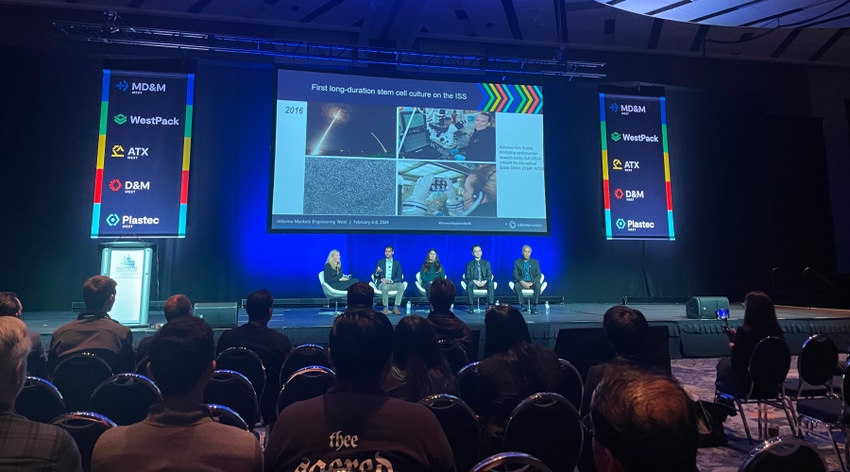Your Next Medical Device Could Be Manufactured in Space
Think it sounds like science fiction? Production has already begun on the International Space Station.
February 6, 2024

At a Glance
- Microgravity can reduce defects in medical device manufacturing
- Cost is the main barrier to manufacturing medical devices in space
- Breakthrough medical devices are prime candidates for manufacture in space
What’s the next frontier for medtech manufacturing? Space as the new cleanroom.
That’s the vision of Axiom Space, which is building the world’s first commercial space station. In a kickoff keynote Tuesday at IME West, the company’s director of in-space manufacturing, Jana Stoudemire, led a discussion about the production of everything from medical and biotech devices to semiconductors in the final frontier.
Zero-g is key
“Microgravity conditions can allow us to produce things we could never produce on Earth,” added Yupeng Chen, PhD, an associate professor of biomedical engineering at the University of Connecticut. He’s working on nanomaterials for regenerative medicine, which he has received funding to develop on the ISS.
Removing gravity from the equation can reduce the potential for certain defects, explained panelist Nicole Wagner, PhD. The company she heads, LambdaVision, is developing a protein-based artificial retina that’s already been made on the International Space Station (ISS).
Quality benefits aside, is extraterrestrial manufacturing even necessary? Couldn’t we just simulate microgravity environments here on Earth?
Not really, the experts insisted. LambdaVision’s retinal implant, for example, takes a week to build. Maintaining a consistent microgravity outside of space would be a stretch, explained Arun Sharma, PhD, an assistant professor at the Board of Governors Regenerative Medicine Institute at Cedars-Sinai Medical center in Los Angeles who has studied the effect of microgravity on human cardiovascular function.
“There’s no replacement for the real thing,” he said.
The practicality of medtech manufacturing in space
But is production in space really practical?
There are, of course, hurdles to overcome. Today, at least, space is far from a sterile environment. “The ISS looks a bit like a 20-year-old garage,” Stoudemire admitted.
There’s also the matter of cost. While Axiom Space is working to build infrastructure to scale production, “it’s expensive to go to space,” Stoudemire conceded.
In other words, don’t expect to outsource production of your next medical device to the stars unless it’s truly a game-changer or a breakthrough that benefits a large patient population. Products that justify production in space, Stoudemire said, “are going to be so much of a paradigm shift for patients that the costs will be justified.”
And it may not be so far out there to expect to see that paradigm shift one day soon, with Stoudemire calling this “the decade of results.”
“It’s not the future we’re talking about,” she said. “It’s today.”
About the Author(s)
You May Also Like



.png?width=300&auto=webp&quality=80&disable=upscale)
